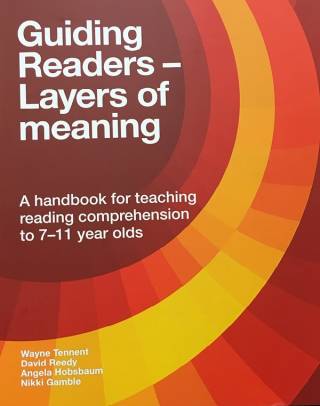How can teachers foster good reading in pupils aged 7 - 11? This book explains the way to do it.
A handbook for teaching reading comprehension to 7-11 year-olds
Edited by Wayne Tennent, David Reedy, Angela Hobsbaum and Nikki Gamble
Pub Date: 16th August 2016
ISBN: 978 1 78277 182 1
Extent: 224 pages
Price: £24.99
Format: Paperback
Trim Size: 279 x 216 mm
Imprint: UCL IOE Press
Rights: World
Subject: Language and Literacy
“'If you want to run effective, inspired and engaging guided reading sessions in your school with junior-aged learners then look no further- just buy this book. It distils the principles, offers practical examples, and recommends rich texts (fiction and non-fiction) in a thoroughly accessible and inviting manner. This is a super book - a great buy. A must buy.' - Professor Teresa Cremin, Open University.
- What is this book about?
Reading comprehension is so much more than just reading words, and this book explains how to develop all aspects of it for pupils aged 7-11. Written by top experts in the field, it includes eleven in-depth case studies - taken from real-life classrooms - of lessons on fiction and non-fiction, poetry and picture books, advertising and film.
- Why is it needed?
Guided reading, widely used in English lessons, has never been satisfactorily examined for children in this age range. Once they have learnt how to read, pupils need support to develop strategies to extend their comprehension: What does the text say? What does it mean? What do I feel about it?
- What is special about guiding readers?
We can guide readers whenever we open discussions by exploring their understanding rather than telling them. This book shows teachers how it can be done with real classroom examples.
- Who is it for?
All teachers of children aged 7-11, English subject leaders, literacy coordinators, student teachers, teacher-educators, librarians, tutors, reading specialists …
- Authors
Wayne Tennent is a Senior Lecturer in Education at the University of East London. David Reedy is General Secretary of the United Kingdom Literacy Association (UKLA) and Co-Director of the Cambridge Primary Review Trust (CPRT). Angela Hobsbaum, now retired, was a Senior Lecturer at the Institute of Education, University of London, and a national director for Reading Recovery. Nikki Gamble is Director of Just Imagine, and a former Head of English in the Faculty of Education at Anglia Ruskin University.
- Contents
Introduction
PART 1: HOW WE READ AND WHAT TO READ.
Chapter 1: Making sense of texts: reading in the moment and reflecting on reading.
Chapter 2: Text potential: selecting quality texts for guided reading.
PART 2: WHAT TO TEACH AND HOW TO TEACH IT.
Chapter 3: Strategies for teaching comprehension.
Chapter 4: Scaffolding learning through dialogue.
PART 3: CASE STUDIES: LESSONS FROM THE CLASSROOM.
Chapter 5: Introduction to the case studies.
Chapter 6: Examples of guiding reading for 7-9 year olds (Years 3 and 4).
• Case study 1: non-fiction: advertisements.
• Case study 2: picture book: The Lost Thing.
• Case study 3: poetry: 'Maggie Dooley'.
Chapter 7: Examples of guiding reading for 9-11 year olds (Years 5 and 6).
• Case study 4: poetry: 'The Malfeasance'.
• Case study 5: non-fiction: Chocolate.
• Case study 6: film: Black Hole.
• Case study 7: fiction: 'The Wildman'.
Chapter 8: Examples of more challenging reading lessons for 10-12 year olds.
• Case study 8: fiction: 'The Flowers'.
• Case study 9: classic fiction: 'The Nightingale and the Rose'.
• Case study 10: picture book: Memorial.
• Case study 11: poetry: 'For Forest'.
PART 4: DEVELOPING GUIDED READING THROUGH THE SCHOOL.
Chapter 9: Building a reading school: opportunities for professional development.
Chapter 10: Planning for provision across a year group.
Conclusion.
Acknowledgements.
 Close
Close


